“A good chaplain is as valuable as a good general.”
—British Field Marshal Sir Douglas Haig, December 1915
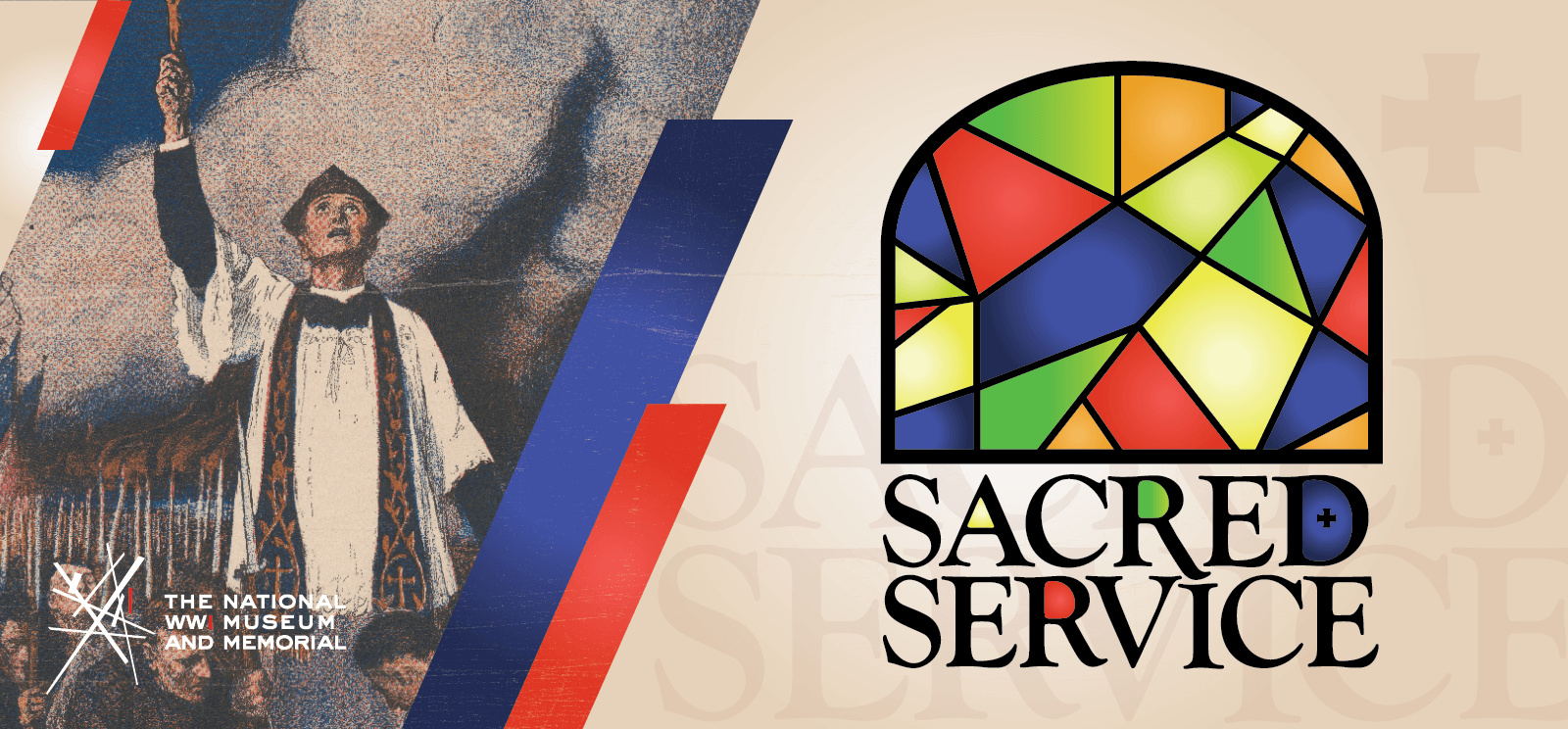
This digital exhibition highlights objects from Sacred Service, the National WWI Museum and Memorial's physical exhibition exploring the experiences of chaplains during World War I. These items illuminate chaplains' experiences caring for the spiritual needs of service members during a time of immense hardship and loss.
A stole brings comfort into focus.
A field Communion set provides materials for worship in war-torn fields.
The gift of a New Testament shows that compassion continues long after battles are over.
Despite the darkness that covered the Great War, the belongings of chaplains demonstrate how light still existed through the power of friendship and faith.
Start your journey by selecting an artifact.

3D Artifact Scan
To rotate, left click+drag or one-finger drag. To zoom in, double click or pinch. To pan, right click+drag or two-fingers drag.
Chaplain C. W. Mayfield's AEF tunic
United States
c. 1917-1919
2023.146.2
By 1917, Americans expected war, but no one was ready for how destructive the Great War would be. Lack of preparation caused supply problems such as the lack of enough chaplains to serve the growing army. Religious groups like the YMCA, Jewish Welfare Board and Knights of Columbus helped fill gaps as the war continued.
To become a chaplain, most men were required to have some college, religious school training, experience ministering and to be under 45 years old.
This olive-colored wool jacket belonged to C. W. Mayfield, an American chaplain who served with the American Expeditionary Forces (AEF) during WWI. A chaplain like Mayfield would commonly visit soldiers in trenches, camps and hospitals. Many chaplains served soldiers of faiths different from their own, holding worship services across religious backgrounds.
Through daily worship services and personal talks, chaplains kept up service members’ morale and lifted both mental and spiritual health. They formed close friendships with doughboys, comforted hurt fighters and consoled dying service members.
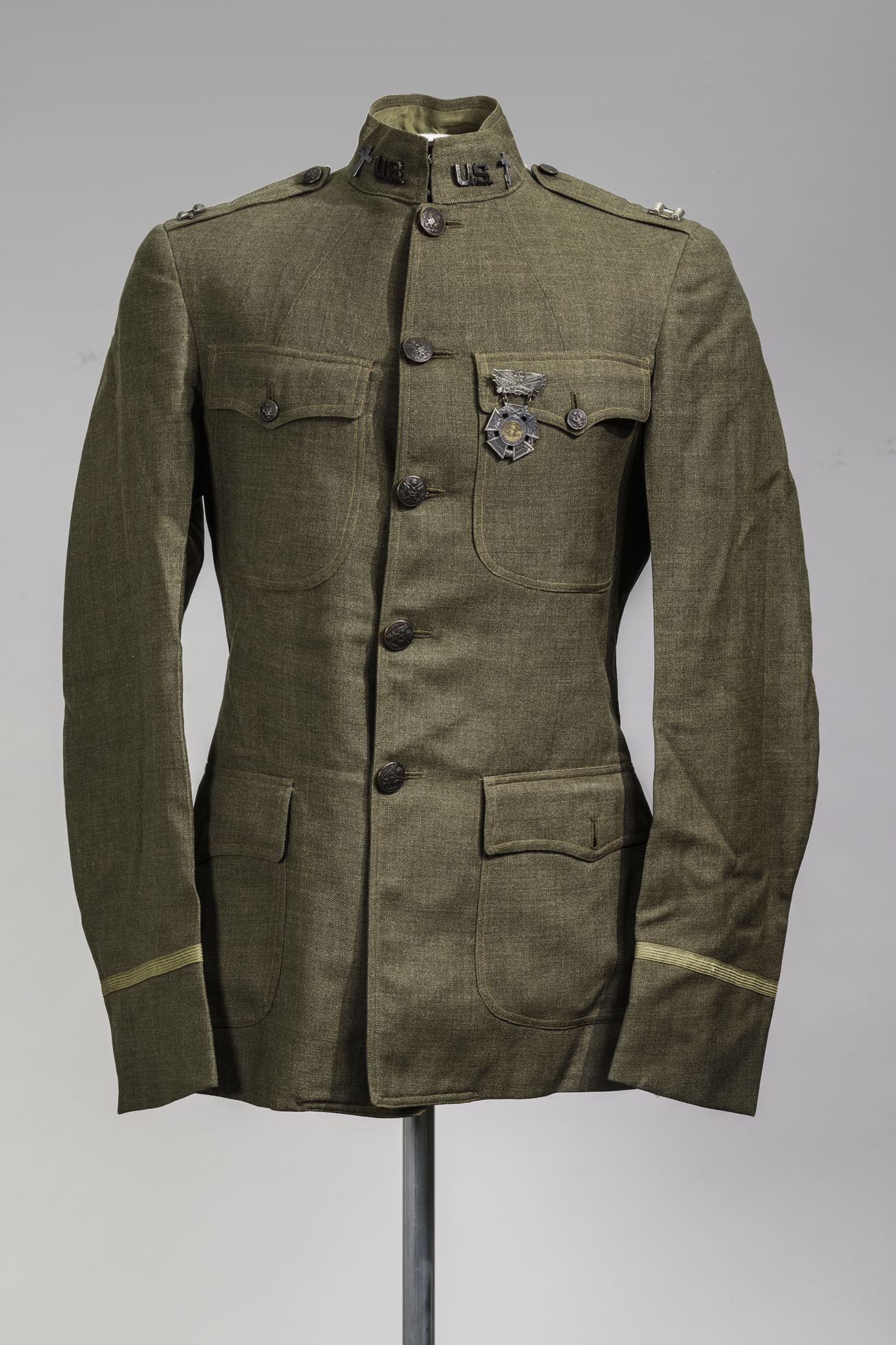

3D Artifact Scan
To rotate, left click+drag or one-finger drag. To zoom in, double click or pinch. To pan, right click+drag or two-fingers drag.
Chaplain's AEF overseas cap with Chaplain Corps pin
United States
c. 1917-1918
2023.57.1a-b
This tailored wool cap would have been a familiar sight among the American forces on the Western Front. It was not worn by U.S. Army personnel assigned to home service. The U.S. War Department authorized the cap only for overseas service with the American Expeditionary Forces (AEF) earning it the title, "overseas cap." The cap was part of the standardized AEF uniform.
Regulation officer's piping around the edge and an embroidered "U.S." at the front identified the wearer as part of the AEF. The cross pin at the front identified the wearer as a chaplain. Inside this cap's interior band, its owner tucked a tiny coin embossed with The Lord's Prayer.
The Lord’s Prayer is the prayer attributed to Christ and given to his followers in the Christian tradition.
For chaplains who braved brutal conditions alongside soldiers in the trenches, open fields and bombed-out towns of World War I, the overseas cap served as both practical headgear and a badge of their commitment to serve.
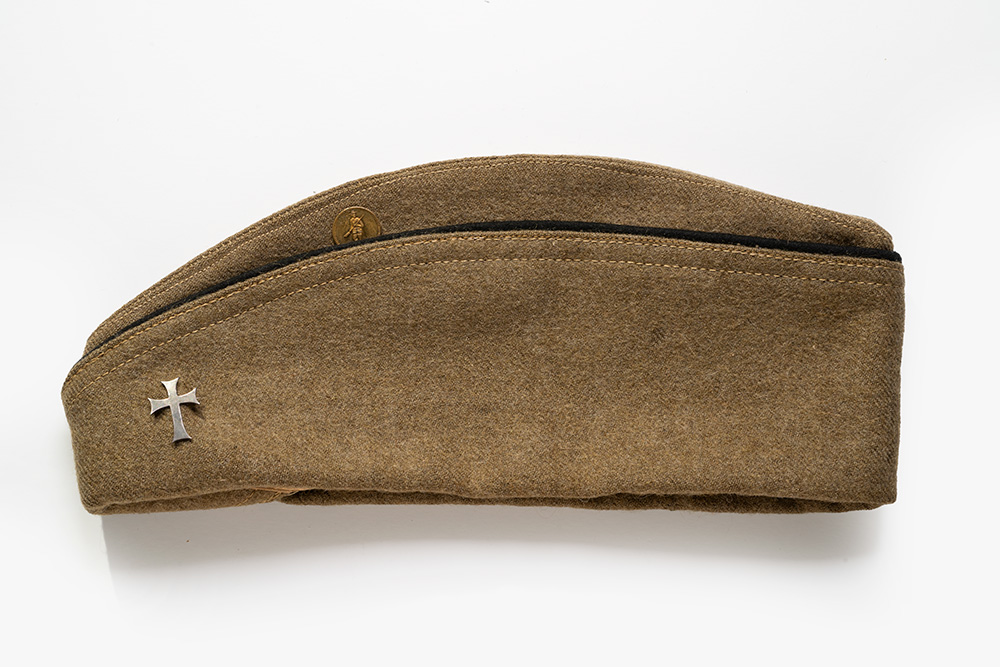

3D Artifact Scan
To rotate, left click+drag or one-finger drag. To zoom in, double click or pinch. To pan, right click+drag or two-fingers drag.
9th Field Hospital chaplain's stole
Italy
c. 1914-1917
2023.244.1
Chaplains often supplemented their frontline service by providing spiritual and emotional support to service members in field hospitals. In these mobile medical facilities, chaplains comforted injured and dying troops through ministry, letter writing and compassionate conversations. The work of chaplains in wartime hospitals was just as important as ministries directly on the battlefield.
This red silk stole belonged to an Italian chaplain who worked in the 9th Field Hospital during World War I. It has gold fringe trim, a star and the number nine, showing he was a chaplain for that field hospital. The stole let others know the wearer was a man of God there to offer spiritual help. It allowed him to freely walk among injured men, many badly hurt, and perform last rites for the dying.
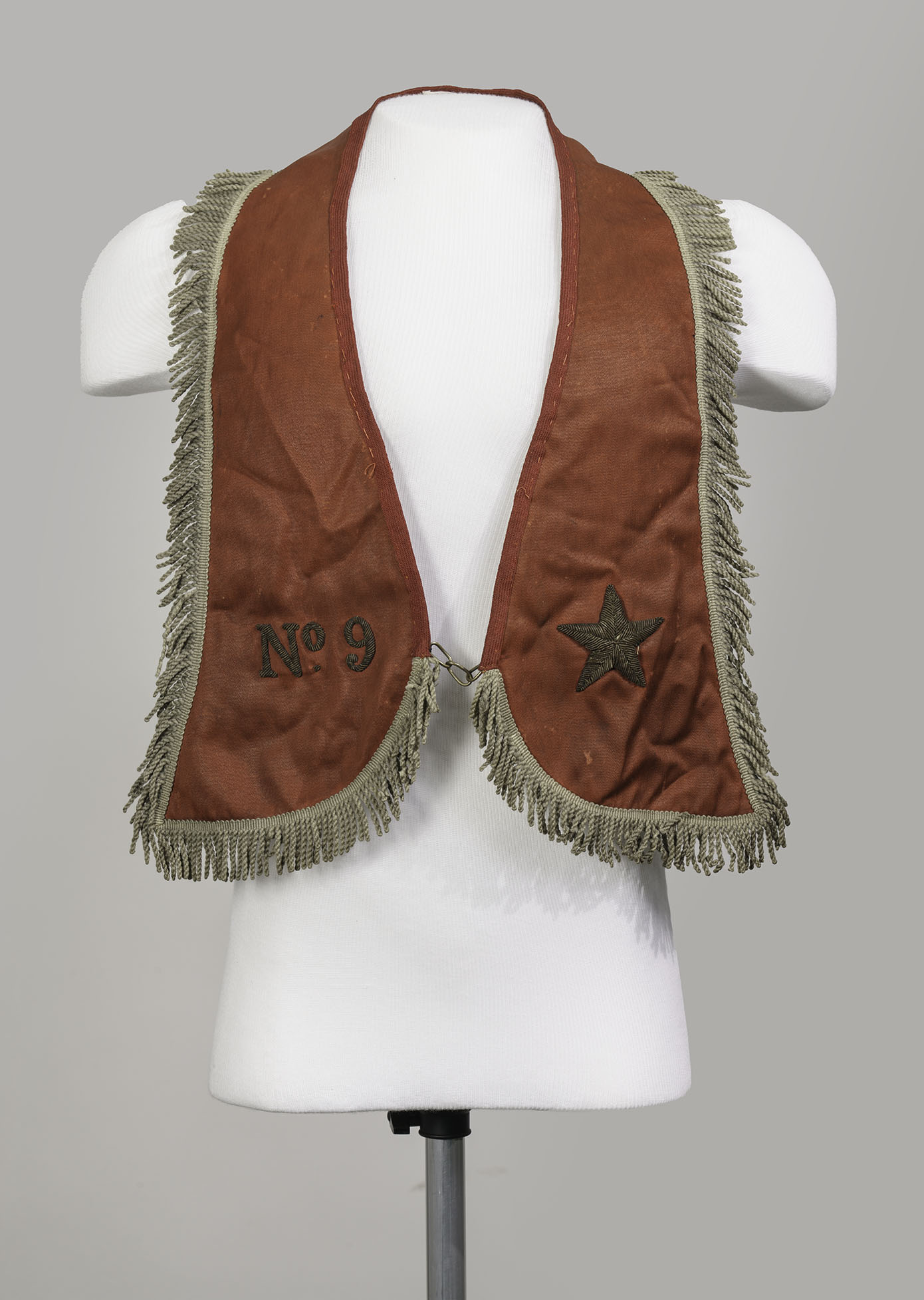

3D Artifact Scan
To rotate, left click+drag or one-finger drag. To zoom in, double click or pinch. To pan, right click+drag or two-fingers drag.
Abridged Prayer Book for Jews in the Army and Navy of the United States
United States
1918
1992.55.11
Jewish Americans and others, such as Latter-day Saints, Christian Scientists and dozens of smaller Christian faiths, wanted chaplains for their soldiers in the U.S. Army. Before WWI, U.S. Army chaplaincy was only officially open to mainline Protestant Christian and Roman Catholic clergy. On Oct. 6, 1917, Congress passed a bill opening the chaplaincy to Jews and to other faith groups.
Jewish service members often faced challenges due to antisemitism, and chaplains stepped in to protect them from unfair treatment. American Chaplain Rabbi Lee Levinger even joked that part of a chaplain's role was to shield soldiers from their own “tyrants and oppressors,” referring to line officers.
At the same time, community groups also offered support. National organizations like the Jewish Welfare Board (often known as the JWB) came together with groups of other faiths in a joint effort called the United War Work Campaign. Their goal was to support chaplains and provide financial resources, manpower and supplies, including prayer books like this one, to service members.
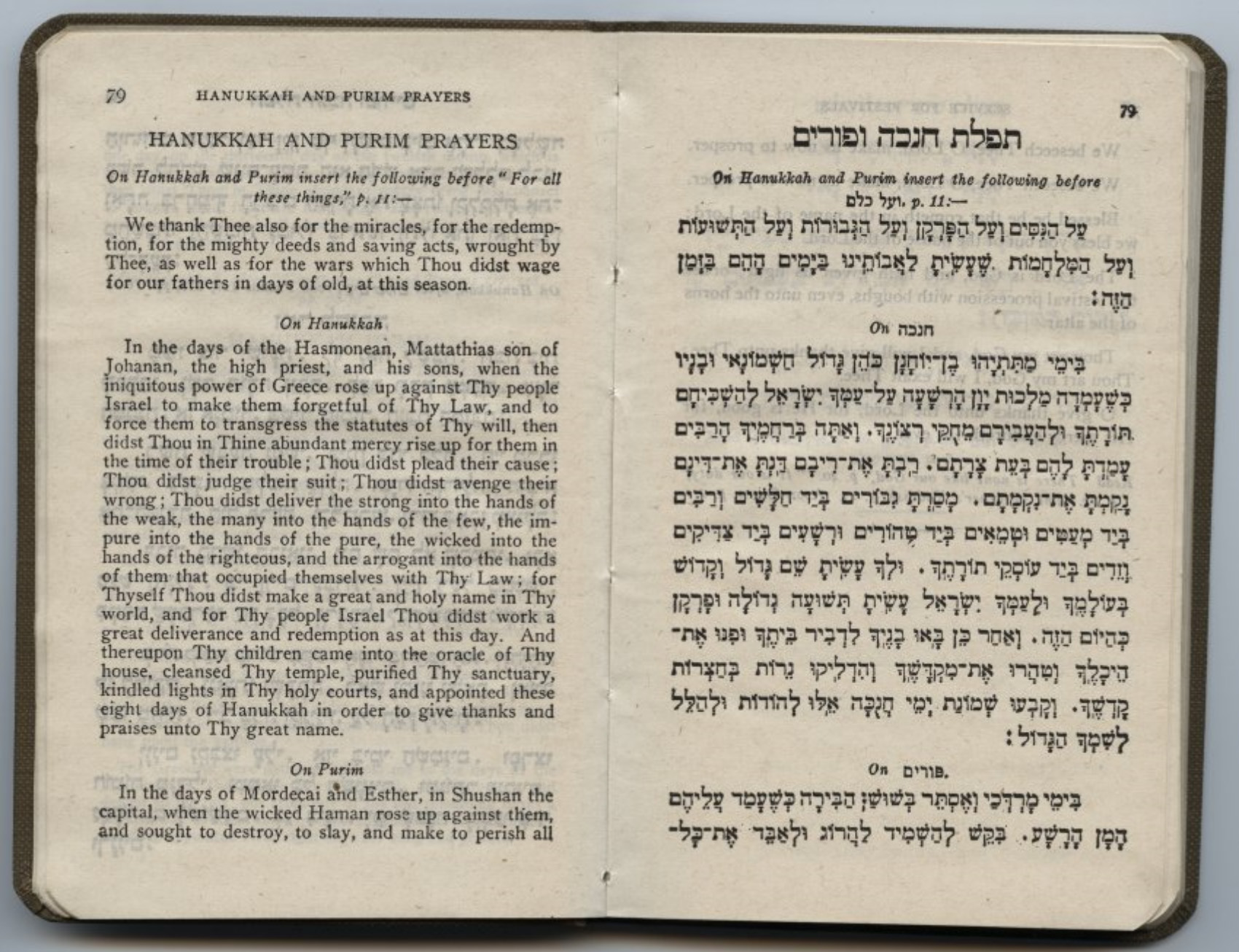

3D Artifact Scan
To rotate, left click+drag or one-finger drag. To zoom in, double click or pinch. To pan, right click+drag or two-fingers drag.
Pyx
United States
c. 1917-1919
2023.104.1
Sacramental oil container
Russia
c. 1914-1917
2023.103.1
During times of war, service members faced constant danger and the possibility of death. In such difficult moments, chaplains provided spiritual support to fighters through sacraments. Sacraments are religious rituals that bring divine grace and comfort.
Holy oils, carried in sacramental oil containers made of silver or pewter, are often used in Orthodox and Roman Catholic Christian sacramental rituals.
One important sacrament for many Christian service members was Holy Communion. This sacrament reenacts the Last Supper of Christ and represents the meaning of suffering and sacrifice, as well as the hope for redemption and eternal life. Holy Communion was especially meaningful to service members who knew they might lose their lives in the war.
In the Christian church, a pyx is a container in which the consecrated bread of Communion is placed for safekeeping.
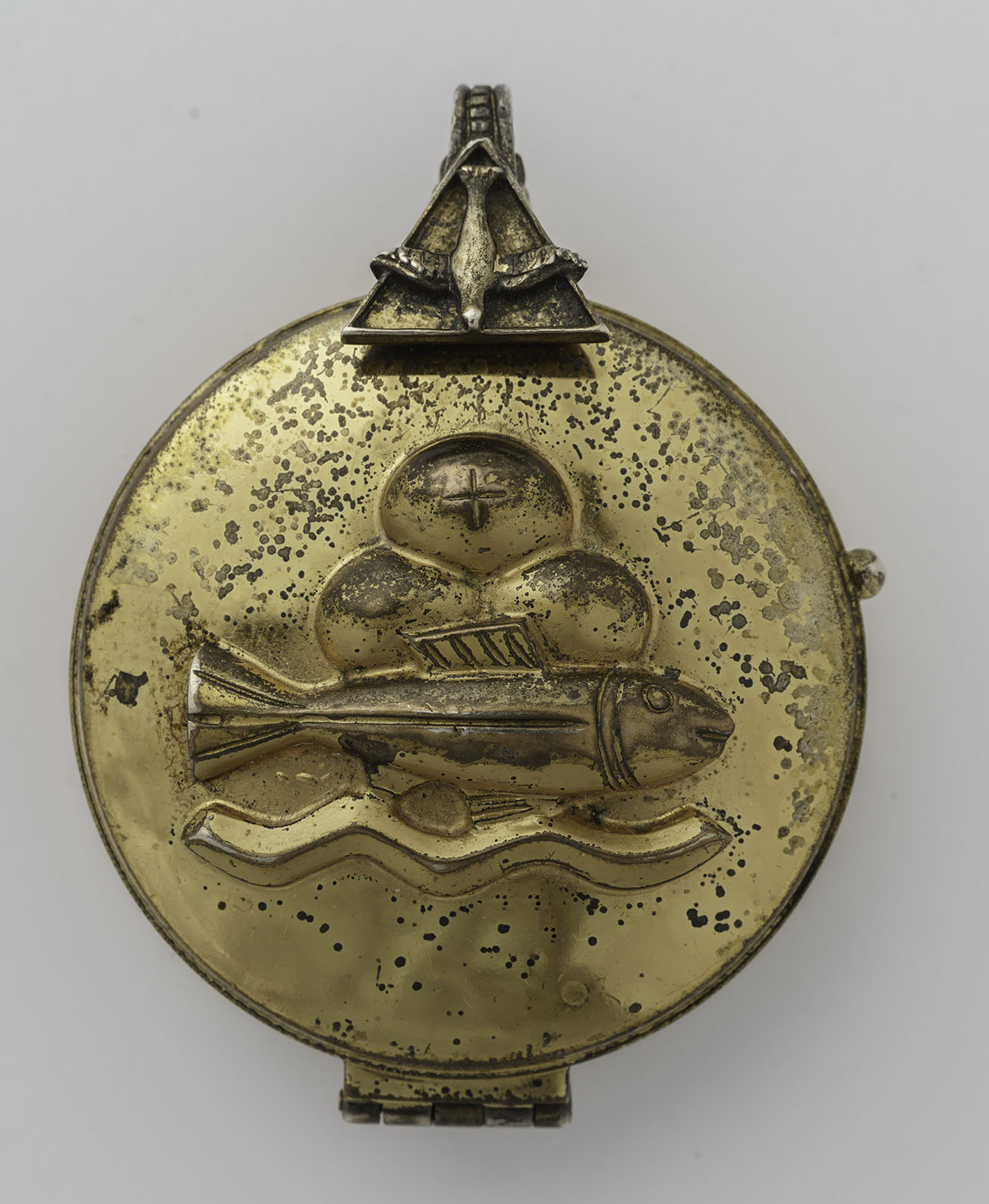
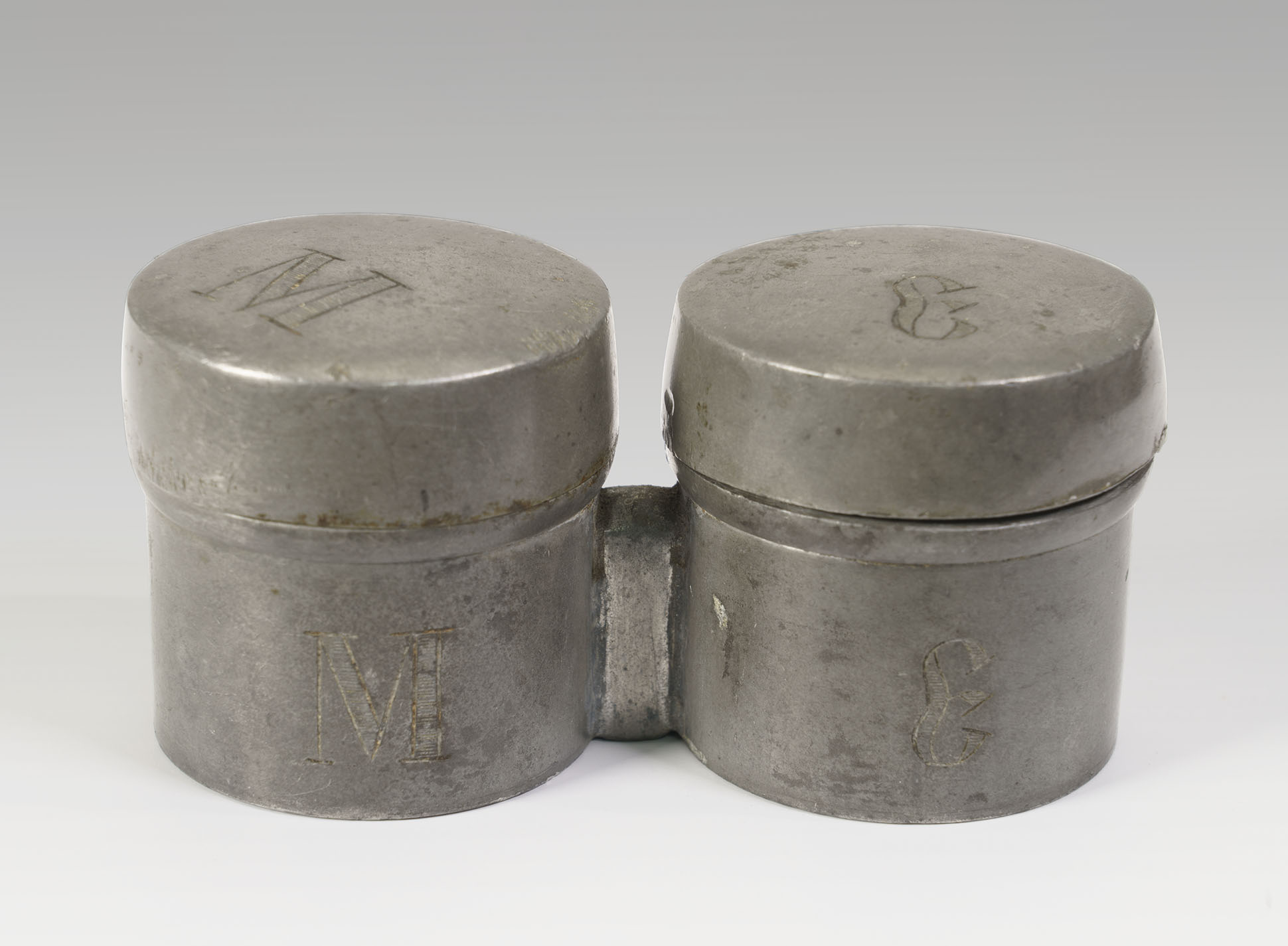

3D Artifact Scan
To rotate, left click+drag or one-finger drag. To zoom in, double click or pinch. To pan, right click+drag or two-fingers drag.
The New Testament
United States
1918
2023.112.1
“2 Timothy 4:7, ‘I have fought a good fight, I have finished my course, I have kept my faith.’ He was preaching next to the last sermon he ever preached to many boys who listened to the last sermon they ever heard on this earth, for that night we marched into the fight and some of the boys who sat there on the hillside that Sunday morning died for America before the sun went down the next day, and a few days afterwards our chaplain lost his life, too.”
—Lt. Frank Holden remembering Chaplain Smart’s service on the morning of Oct. 6, 1918.
This small book is an American Expeditionary Forces (AEF) New Testament given to Sgt. George Hendrix on Oct. 8, 1918, by Chaplain Daniel Smart at Verdun. Chaplains often gave service members copies of scripture to keep, especially the New Testament. Chaplain Smart died of wounds received in action on Oct. 15, 1918, just days after giving this gift. He is buried in the Meuse-Argonne American Cemetery.
There are reports of troops from all faith backgrounds describing the consolation they felt receiving or sharing a Bible with fellow service members. Regardless of belief, many fighters found scripture an important spiritual lifeline during the darkest hours of the Great War.
The New Testament is the second and smaller division of the Christian Bible. It discusses the teachings and person of Christ, as well as events related to first-century Christianity.
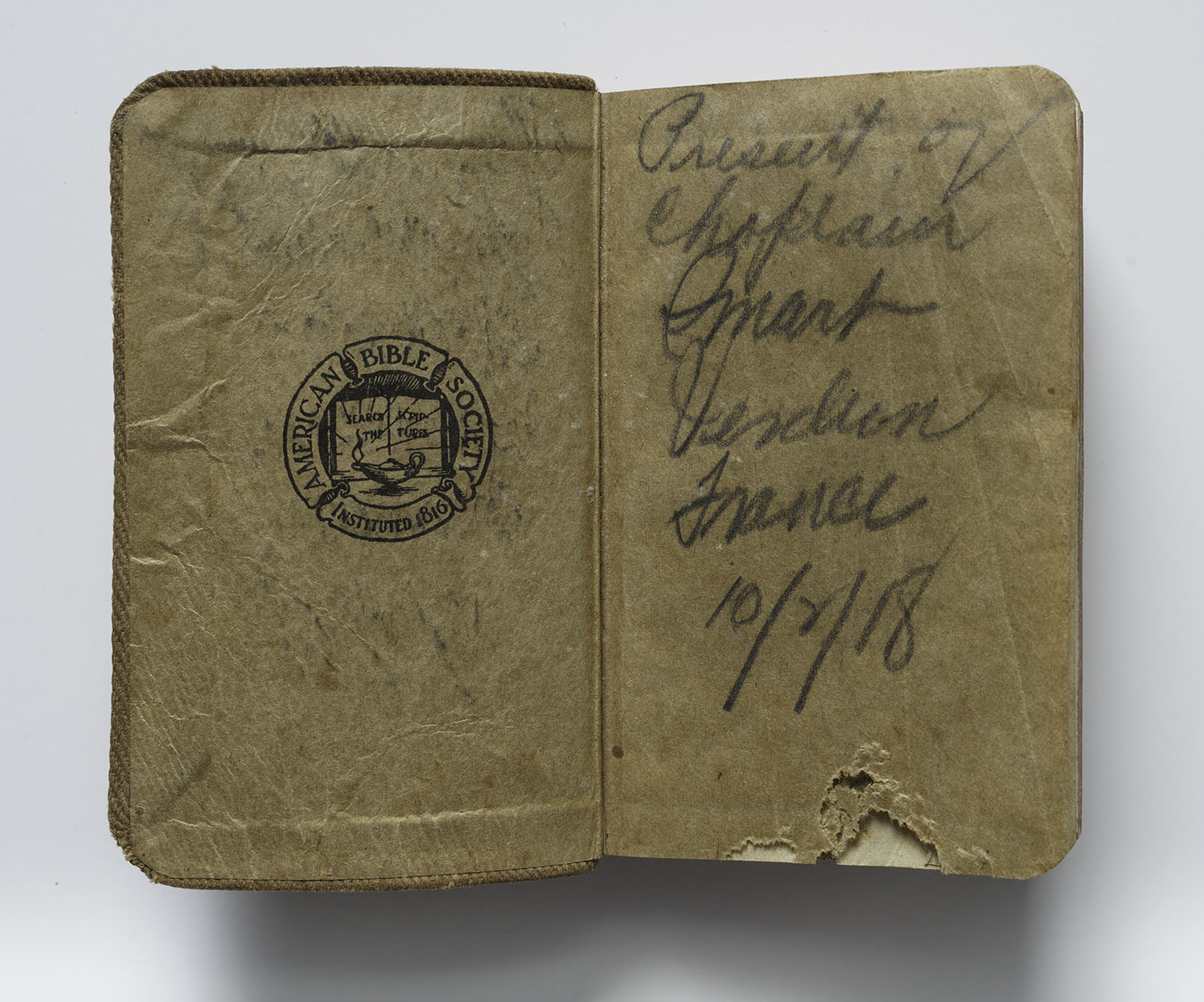

3D Artifact Scan
To rotate, left click+drag or one-finger drag. To zoom in, double click or pinch. To pan, right click+drag or two-fingers drag.
Field Communion set
Great Britain
c. 1914-1918
2023.148.1
During the difficult days of the Great War, maintaining faith took on new importance for many service members far from home. A British Army chaplain carried this field Communion case as he traveled the front lines to perform services and offer counseling to troops in the trenches, encampments and field hospitals.
Holy Communion is a Christian sacrament that reenacts the Last Supper of Christ.
A field Communion set, also referred to as an altar kit or chaplain’s kit, often looks like a briefcase or suitcase. The compact, portable kits allowed chaplains to bring the spiritual comfort of sacraments to service members wherever they were stationed, even under active bombardment, thanks to the thought given to their practical field design. A set’s contents would vary depending on whether the chaplain carrying it was Roman Catholic or Anglican.
This Anglican field Communion set includes a case, chalice, two patens, wine ewer, cup, pyx, two altar linens and two palls.
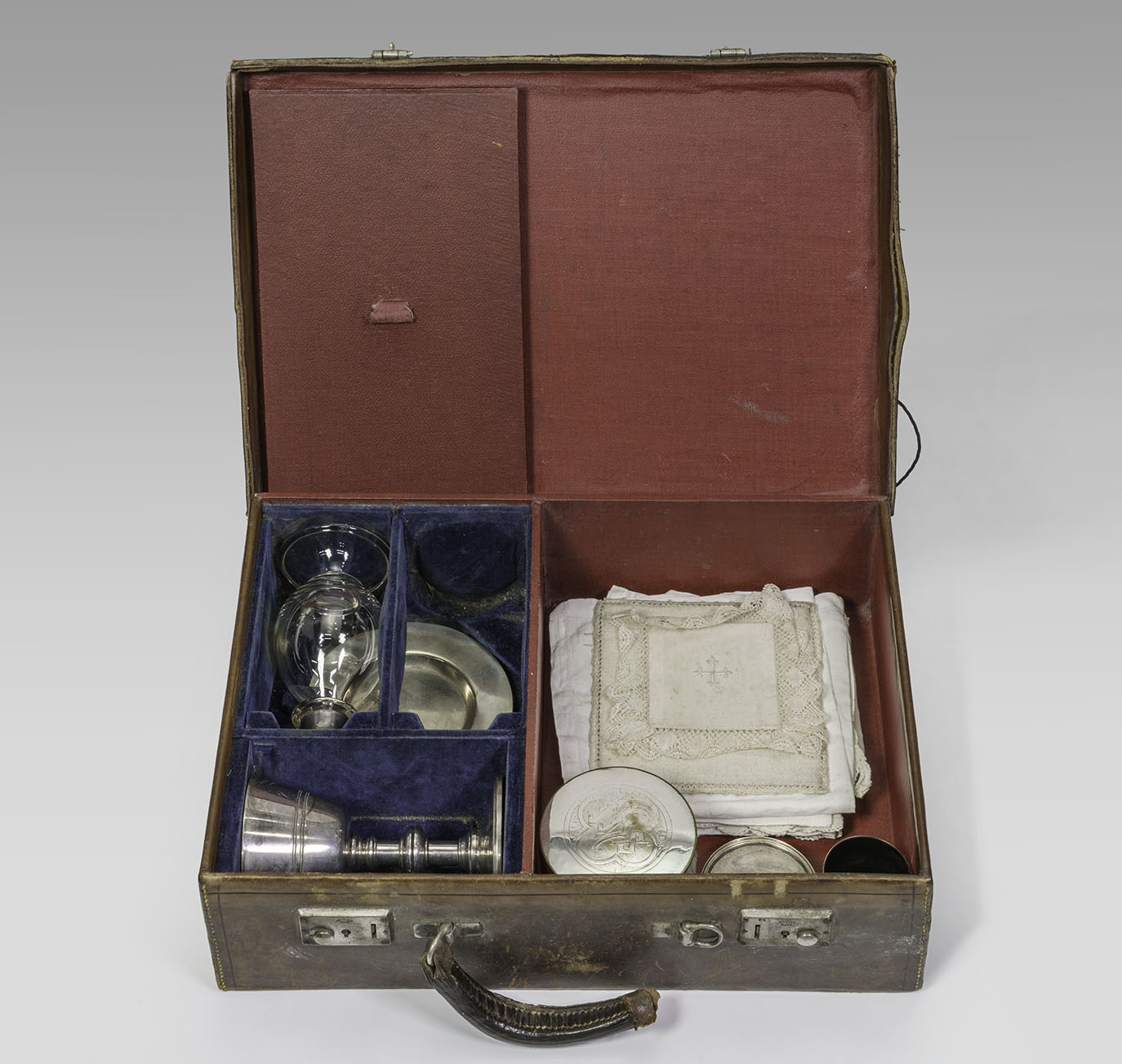
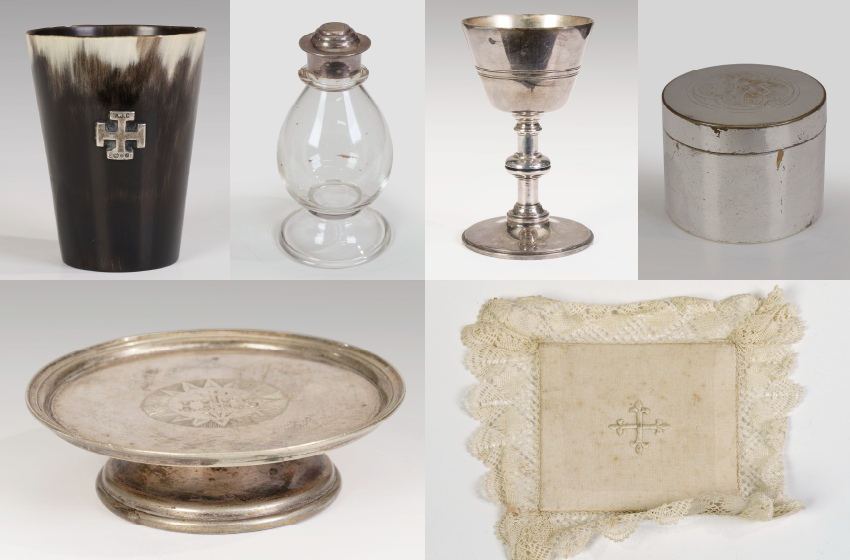

3D Artifact Scan
To rotate, left click+drag or one-finger drag. To zoom in, double click or pinch. To pan, right click+drag or two-fingers drag.
Army Chaplains’ Department captain’s dress tunic and pants
Great Britain
c. 1914-1918
2023.98.1-2
This navy-blue wool tunic and matching trousers belonged to a chaplain with the rank of captain who served with the British Army Chaplains’ Department. During the conflict, the department recruited 4,400 chaplains. Nicknamed “padres” by the fighting forces, many British chaplains became known for dedication to their troops. By 1918, 179 British Army chaplains had sacrificed their lives in the line of duty. King George V granted the prefix “Royal” to the Army Chaplains’ Department in 1919 to recognize the supreme sacrifice and honor displayed by British chaplains in the Great War.
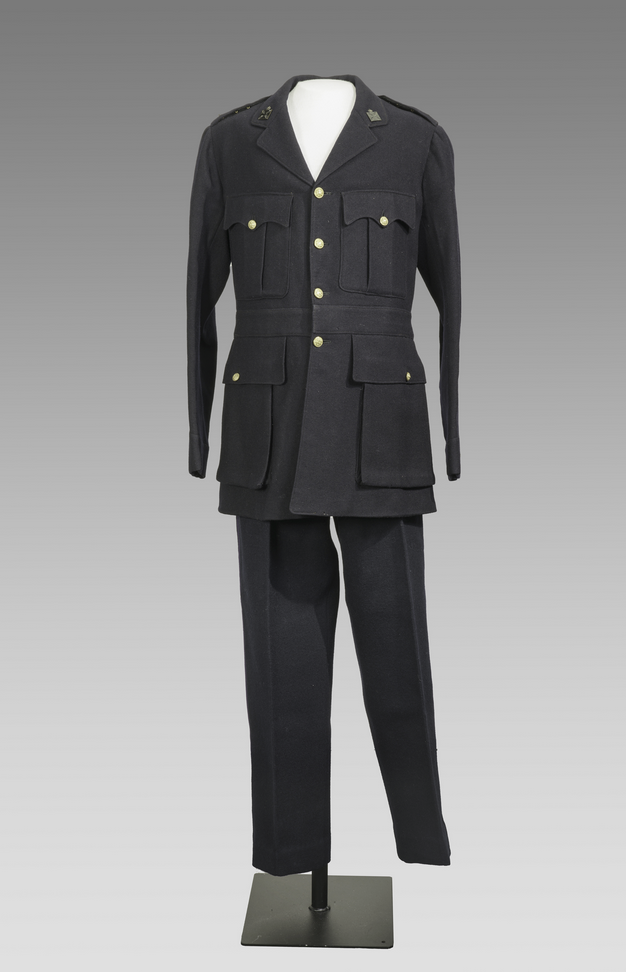

3D Artifact Scan
To rotate, left click+drag or one-finger drag. To zoom in, double click or pinch. To pan, right click+drag or two-fingers drag.
Reserve trench altar crucifix
France
c. 1914-1918
2023.79.1
Chaplain’s crucifix
Germany
c. 1914-1918
2023.99.3
As service members faced terrible hardships and suffering, the idea of Christ's crucifixion took on a deeper meaning for many. A crucifix was a powerful symbol of sacrifice and redemption for some of the fighters enduring the war.
A crucifix is a cross with the figure of Christ suffering crucifixion, a method of capital punishment in which the condemned is tied or nailed to a cross, beam or stake and left to hang until eventual death.
Chaplains from different Christian denominations, such as Roman Catholic, Russian Orthodox and Lutheran, embraced their faith by wearing a crucifix as a visible sign of their beliefs.
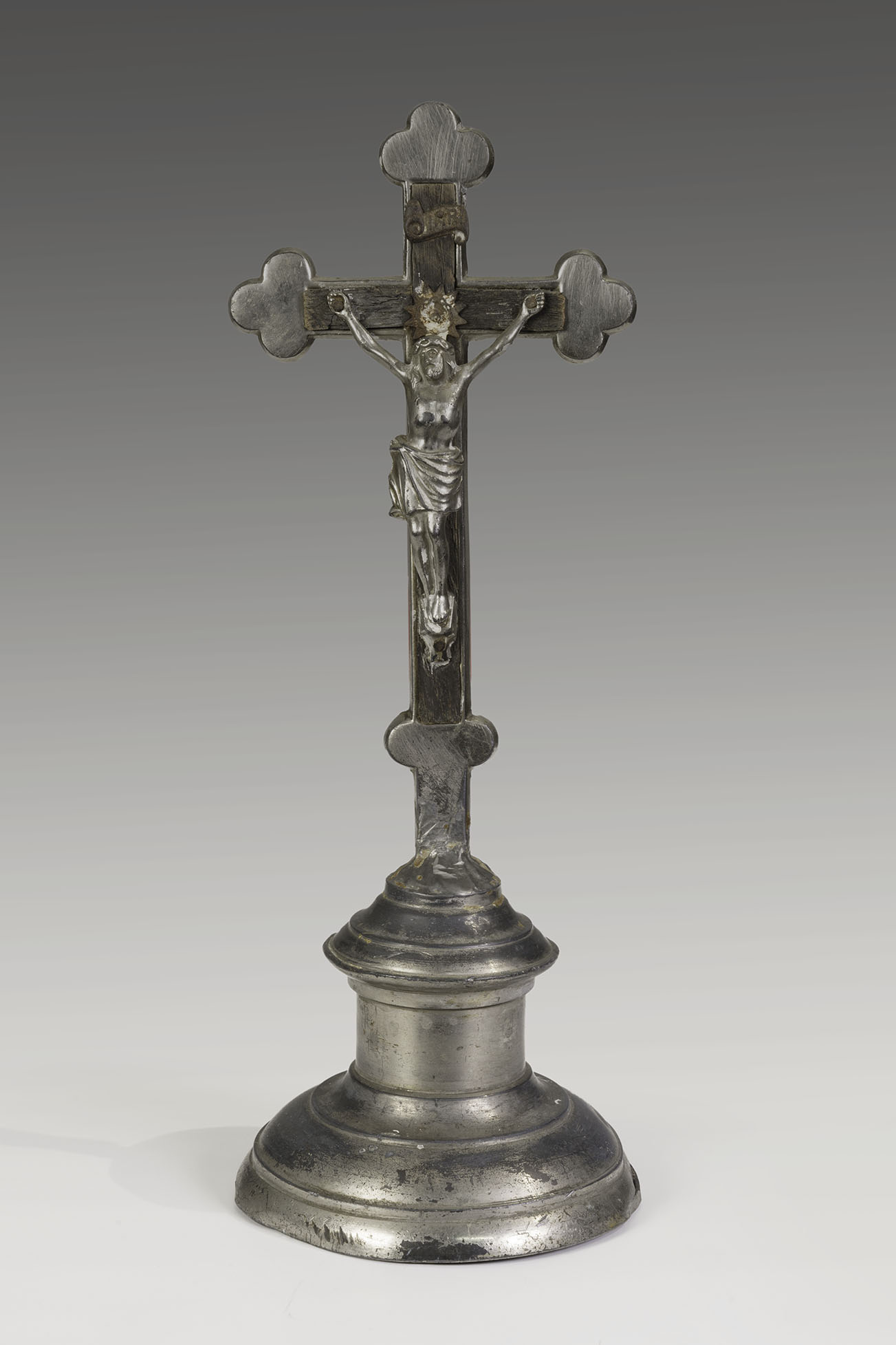
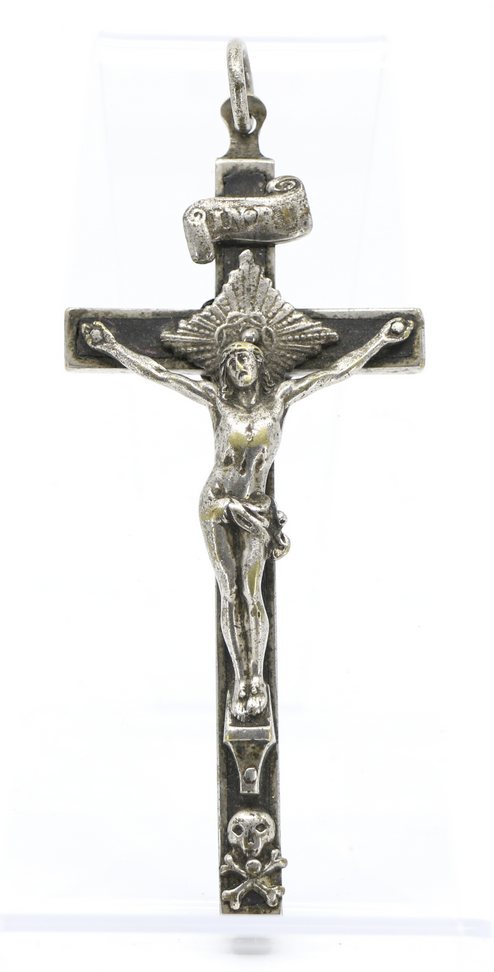
The work of Great War chaplains had a profound impact on many service members, bringing comfort and compassion to those enduring the chaos of war. The artifacts that remain, like stoles, field Communion sets, uniforms and books of prayer or scripture, are physical reminders of chaplains’ dedication to service and humanity.
Though World War I was often filled with despair and darkness, these belongings continue to shine with chaplains’ acts of faith, friendship and hope.
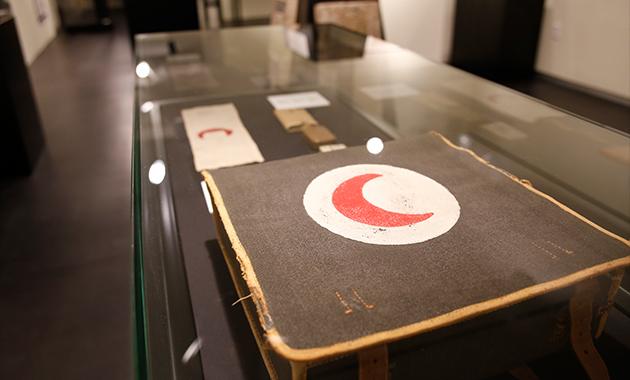
Visit the Gallery Exhibition
Learn about even more artifacts in Sacred Service.
Sacred Service is an initiative of The Center for Religion, Culture and the Great War, made possible through generous support from Lilly Endowment Inc.

This exhibition is supported in part by the City of Kansas City, Missouri Neighborhood Tourist Development Fund.
